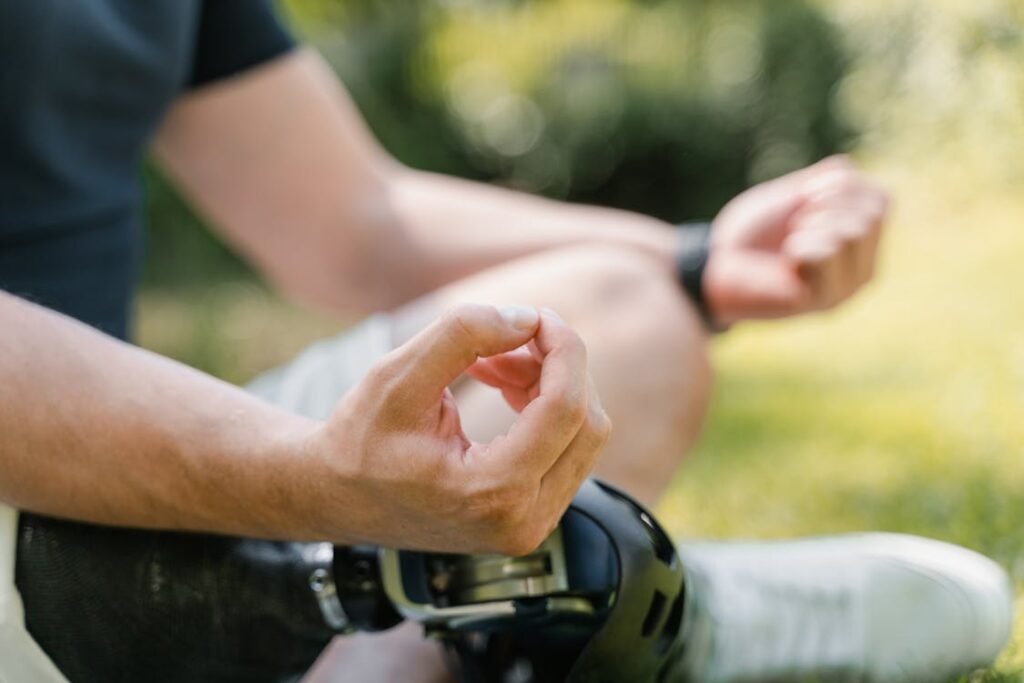After an amputation, getting ready for a prosthetic limb is not just about waiting for your body to recover. It involves careful steps that help your limb heal properly, stay in good shape, and become ready for a prosthetic fit. One of the most important steps during this time is compression therapy. It may sound technical, but it plays a big role in helping the wound close, the swelling go down, and the limb become strong and stable enough for prosthetic use.
At Robobionics, we’ve worked with people at every stage of their journey—from the day after surgery to the day they take their first steps with their new prosthesis. One thing we’ve seen again and again is that when compression therapy is used properly, it speeds up healing and makes prosthetic fitting smoother and safer. In this article, we’ll talk about how and why compression therapy works, and how it fits into the bigger picture of wound healing and prosthetic readiness.

How the Body Heals After Amputation
What Happens to the Limb Right After Surgery
When someone goes through an amputation, their body starts healing the wound almost immediately. The first thing the body does is send more blood to the area.
This helps bring oxygen and nutrients to the site, which are needed for healing. But it also brings extra fluid, which causes swelling, also known as post-operative edema.
This swelling is part of the natural healing process, but if it stays for too long or becomes too much, it can slow things down. It can stretch the skin, make the wound edges pull apart, and even cause pain or infection. That’s why controlling this swelling is one of the first goals after amputation.
Over time, the wound starts to close, scar tissue forms, and the skin toughens. The shape of the limb also changes during this process. Without compression, the limb might become round or bulbous. But for a prosthesis to fit properly, it needs to be more cylindrical and even.
How Delays in Healing Affect Prosthetic Fitting
If the wound takes too long to heal or if the limb stays swollen, the patient cannot be fitted for a prosthesis. A swollen limb changes shape often.
This means any socket that’s made may quickly become loose or painful to wear. The patient may need multiple fittings or replacements, which leads to delays and extra cost.
Moreover, if the wound does not close correctly, there is a higher risk of infection. Open wounds or fragile skin are not safe to be placed in a prosthetic socket.
This risk pushes the fitting date further away. For patients, that delay can be frustrating and can also affect emotional recovery. Many people are eager to move forward but feel stuck waiting for their limb to be ready.
Using compression therapy early and correctly can shorten this wait. It helps control swelling, shapes the limb, improves circulation, and supports stronger healing—all of which get the patient closer to their prosthesis faster.
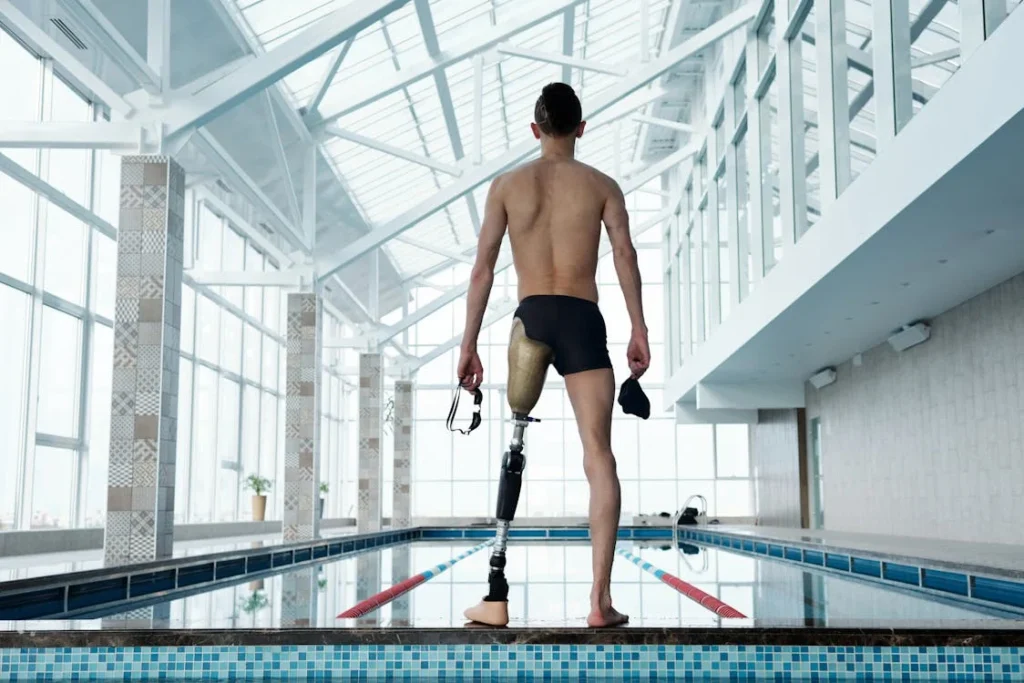
What Compression Therapy Really Does
The Role of Pressure in Healing
Compression therapy uses gentle, steady pressure on the residual limb to guide it into healing the right way. When a limb is compressed properly, the pressure pushes excess fluid out of the tissues and back into the bloodstream, where it can be removed by the body.
This helps reduce swelling, improves skin condition, and stops the limb from becoming too soft or irregular in shape.
The steady pressure also supports the soft tissues as they adjust to new forces. After amputation, the skin and muscles are adjusting to being in a new environment.
Compression makes them firm and helps them resist the stress of daily movement. This firmness becomes important when it’s time to wear a prosthetic socket, which places pressure on different parts of the limb during walking.
Another benefit of compression is improved blood flow. Some people think pressure reduces circulation, but when done correctly, it actually helps. It supports small blood vessels, encourages fresh oxygen to reach the tissues, and keeps the skin healthier. This speeds up wound closure and reduces infection risk.
How Compression Shapes the Limb
In the beginning, most residual limbs are swollen and uneven. They may have areas that stick out more than others or feel squishy when touched.
Over time, with compression, these irregularities become smoother. The limb becomes firmer and starts taking on the ideal shape for a prosthetic socket.
A well-shaped limb is essential for prosthetic comfort. If the shape is too round or has deep dips, the socket will either press too hard in some spots or leave gaps in others.
This can cause blisters, pain, or movement inside the socket. Proper compression shapes the limb to fit more snugly into a socket, reducing the chance of friction or injury.
Compression therapy also trains the patient’s body. Wearing compression garments regularly helps the skin and nerves get used to pressure.
This makes the transition to a prosthesis feel more natural and less uncomfortable. It reduces the chances of early socket rejection and makes rehab more effective.
Types of Compression Used in Recovery
Soft Dressings and Elastic Bandages
Right after surgery, compression starts with soft dressings. These are often elastic bandages wrapped by nurses or physiotherapists. They’re used when the wound is still fresh and need to be adjusted often.
The wrap is applied in a specific way to ensure pressure is even and not too tight. If wrapped incorrectly, these bandages can cut off circulation or create pressure points, so training is essential.
Elastic wraps allow flexibility and are easy to remove for wound checks or dressing changes. However, they require frequent rewrapping and may not always provide consistent pressure throughout the day.
Shrinkers and Compression Socks
Once the wound is closed and swelling has come down a little, patients are usually shifted to shrinker socks. These are specially designed garments that fit over the limb and apply even compression throughout. They come in different sizes and shapes to match the limb’s healing stage.
Shrinkers are easy to use, don’t need constant adjustments, and can be worn for long hours. They also help maintain the limb’s shape after therapy or physical activity. Patients are usually advised to wear them for most of the day and only remove them for cleaning or sleeping.
Shrinkers are often continued even after prosthetic fitting, especially when the limb is still going through minor changes in size. They help prevent fluid buildup at night and maintain consistent limb volume.
Rigid and Semi-Rigid Dressings
Some rehab programs use rigid or semi-rigid compression systems early after surgery. These dressings offer more structure and are especially useful in cases where the limb needs firm shaping quickly.
They also protect the wound from bumps or accidental hits. However, they are less common in home settings due to their complexity and need for expert fitting.

The Timing and Routine of Compression Therapy
When to Start and For How Long
Compression therapy usually starts within a few days after surgery, once the immediate bleeding has stopped and the wound is stable. Initially, it’s part of post-operative dressing. As healing progresses, compression becomes a daily part of the rehab routine.
Most patients wear some form of compression for several months. The exact time depends on how quickly the swelling goes down and how stable the limb becomes.
In many cases, patients continue wearing shrinkers even after prosthetic fitting—especially at night or during periods of rest—to maintain limb volume.
The goal is to reach a point where the limb volume and shape remain stable for at least a few weeks. That’s when a prosthetist can confidently begin the socket fitting process.
How to Stick to a Compression Routine
Sticking to the compression schedule is crucial. Even a few days without wearing compression can cause swelling to return. This can set the healing back by weeks. That’s why it’s important for patients to understand the value of this step and make it part of their daily habits.
Patients should be taught how to apply their compression garments properly, check for signs of too much pressure, and keep the garments clean. Involving family members or caregivers in this process can make a big difference—especially in the early weeks when mobility is limited.
Some patients may feel tempted to skip compression on hot days or when the limb feels “fine,” but this can lead to setbacks. Once the body stops receiving steady pressure, fluid can return, and the limb shape may begin to change again. Consistency is key.
Why Skin Health Depends on Good Compression
Protecting Skin From Breakdown and Pressure Injuries
Once an amputation site begins to heal, skin quality becomes a vital concern. The new skin is usually thin, sensitive, and more prone to damage.
If compression is inconsistent or poorly applied, some parts of the skin may be exposed to too much pressure, while others get too little. Both scenarios can lead to problems.
Too much localized pressure may cause redness, bruising, or breakdown—especially over bony areas. If the skin breaks open again, the healing process resets, which delays prosthetic fitting and increases infection risk.
On the other hand, not enough pressure allows fluid to build up, leading to puffiness and soft spots. These areas may later develop blisters when placed inside a prosthetic socket.
Proper compression distributes pressure evenly across the limb. This promotes strong, resilient skin that can handle the daily friction and movement of prosthetic use. It also reduces shearing forces—one of the main causes of skin tears in amputees.
Daily skin checks become important during this time. Patients should be taught to inspect their skin for signs of irritation, tightness, or early breakdown.
If any issues arise, compression should be paused and the prosthetist or medical team consulted. Prevention is far more effective than treatment at this stage.
Moisture Balance and Compression
Compression can sometimes trap sweat or moisture against the skin. If the area stays damp for too long, the skin becomes fragile. That’s why choosing the right kind of compression garment—and keeping it clean and dry—is essential.
Breathable, moisture-wicking fabrics help reduce these risks. Patients should also be encouraged to moisturize the skin after removing their compression garment, but only with doctor-approved, non-greasy lotions. Any cream that leaves the skin too slippery could interfere with compression effectiveness.
By managing moisture and pressure together, patients ensure their skin stays strong and ready for the prosthetic phase.

Preventing Infection Through Better Compression Practices
How Compression Affects Circulation and Immunity
Good blood flow helps the immune system deliver white blood cells and healing agents to the surgical site. When circulation is poor—because of swelling or inactivity—the risk of infection increases.
Compression improves venous return, which helps blood travel back to the heart more efficiently. It also supports the lymphatic system in draining waste from the tissue.
As a result, inflammation reduces, oxygen delivery improves, and the wound environment becomes less friendly to bacteria.
In patients with a high risk of infection, such as those with diabetes or immune suppression, early and consistent compression can make the difference between normal healing and serious complications.
Early Warning Signs Made Visible
Compression therapy also plays a role in monitoring healing. When the limb is wrapped or placed in a shrinker daily, any changes in size, color, or smell are easier to detect.
Patients or caregivers are more likely to spot issues early—like redness, unusual warmth, or leakage—which are signs of a possible infection.
This awareness leads to faster response times, reducing the need for antibiotics, surgical debridement, or hospital stays. In many ways, compression becomes not just a therapy but also a daily check-in with the body’s healing progress.
The Psychological Benefits of Compression Therapy
Boosting Motivation Through Visible Progress
Healing from amputation is just as much a mental journey as it is a physical one. Many patients feel frustrated in the early days, especially when progress seems slow. One underrated benefit of compression therapy is how it makes progress visible.
As swelling reduces and the limb begins to take shape, patients often feel encouraged. The smoother appearance, firmer feel, and reduction in pain show that their efforts are working.
That kind of visible feedback can lift their mood and help them stay committed to the rest of the recovery plan.
It also gives them something to look forward to—“I’m getting closer to my prosthesis.” That goal keeps motivation high, especially during difficult days.
Helping With Sensory Adjustment
Many people experience “phantom limb” sensations or hypersensitivity after amputation. The brain needs time to adjust to the new body structure. Compression therapy helps with this, too.
The gentle pressure sends clear signals to the nerves, teaching the brain to reinterpret the area in a more controlled, less chaotic way.
This gradual desensitization reduces pain, improves comfort, and prepares the patient for the sensations of a prosthetic socket. In turn, this smoother adjustment reduces fear and hesitation—emotional barriers that often slow down prosthetic training.
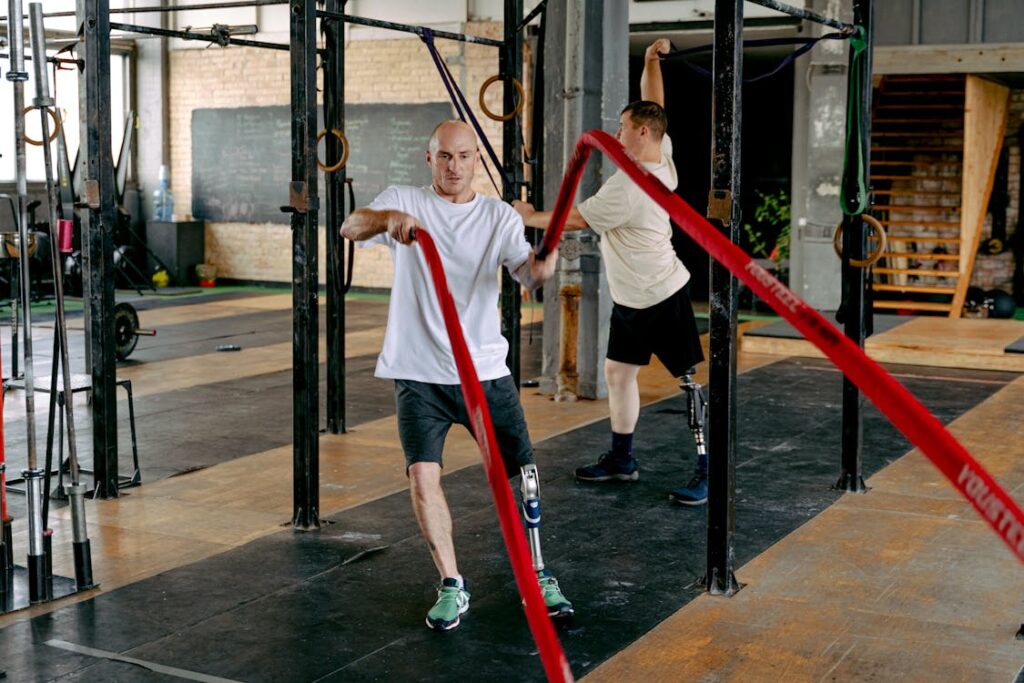
Compression in High-Risk Groups: Diabetic and Vascular Patients
Why Specialized Monitoring Is Needed
Patients with diabetes or vascular conditions have a harder time healing after surgery. Their circulation is often impaired, and their skin may already be fragile before the amputation. For these patients, compression therapy must be carefully adjusted.
If pressure is too high, it may block blood flow completely. If it’s too light, it won’t reduce the swelling. That’s why medical teams use special techniques and materials when treating diabetic patients.
Softer garments, closer monitoring, and more frequent skin checks are part of the routine.
These patients also need help maintaining blood sugar levels, which directly affect wound healing. Compression therapy works best when combined with proper diabetes management, foot care, and early intervention at the first sign of trouble.
Longer Timeframes, Greater Payoff
In high-risk groups, compression therapy may take longer to show visible results. But sticking with it pays off. It reduces the likelihood of re-injury, lowers hospitalization rates, and improves long-term outcomes.
Most importantly, it makes prosthetic readiness possible when other factors might suggest a longer delay.
Compression in Rural and Low-Resource Environments
Training Makes a Big Difference
Not every hospital or clinic has advanced equipment. In many areas, amputees rely on basic wraps and manual care. But with proper training, even simple materials can offer effective compression.
At Robobionics, we’ve worked with community health workers across India to deliver hands-on training in compression wrapping. We teach how to apply the right amount of pressure, how to avoid wrinkles, and how to check for signs of poor circulation. T
hese skills allow patients in remote areas to benefit just as much as those in urban centers.
Affordable Solutions With Big Impact
Compression therapy doesn’t have to be expensive. Reusable shrinkers, washable bandages, and low-cost alternatives can be life-changing if used correctly. The real investment lies in awareness and consistency—not expensive materials.
By expanding access to compression education and tools, we can reduce health disparities and improve prosthetic outcomes even in areas with limited resources.
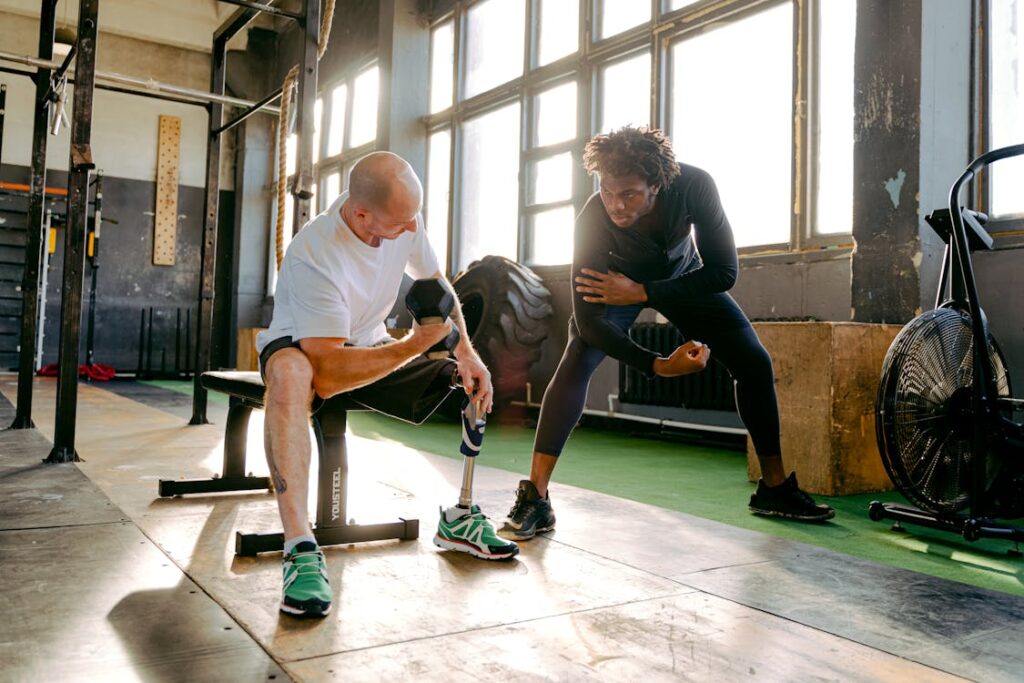
Common Mistakes That Slow Down Healing
Inconsistent Use
One of the most common problems is stopping compression too early. Sometimes, when swelling goes down slightly, patients think they can stop using the garment.
But healing isn’t complete just because the limb looks better. Swelling can return within days if pressure isn’t maintained.
Patients must be encouraged to follow the full course—even if they feel better. This ensures long-term success and avoids setbacks.
Improper Application
A wrap that’s too tight in one area and loose in another can cause more harm than good. Uneven pressure leads to swelling being pushed into one area, causing pain or bulging. Training and supervision, especially early on, help prevent this.
Other common errors include using torn or stretched-out shrinkers, not replacing old garments, or skipping compression during travel or rest days. All of these issues delay healing.
How Compression Fits Into Full Prosthetic Planning
Building a Strong Foundation
Compression therapy is not a separate process—it’s the foundation for successful prosthetic use. A well-compressed, well-shaped limb reduces the number of socket adjustments, lowers the chance of skin issues, and improves balance during walking.
This leads to faster rehab, fewer doctor visits, and less emotional distress. In many cases, patients who follow a proper compression plan reach their prosthetic fitting weeks ahead of schedule.
A Lifelong Tool, Not Just a Temporary Fix
Even after the initial healing phase, compression can be used throughout life. Some people wear compression socks before putting on their prosthesis. Others use them at night to reduce swelling from long walks or physical activity. Some use them seasonally, especially during hot weather or travel.
Learning how to manage compression as a tool—not a burden—gives patients more control over their comfort and mobility.
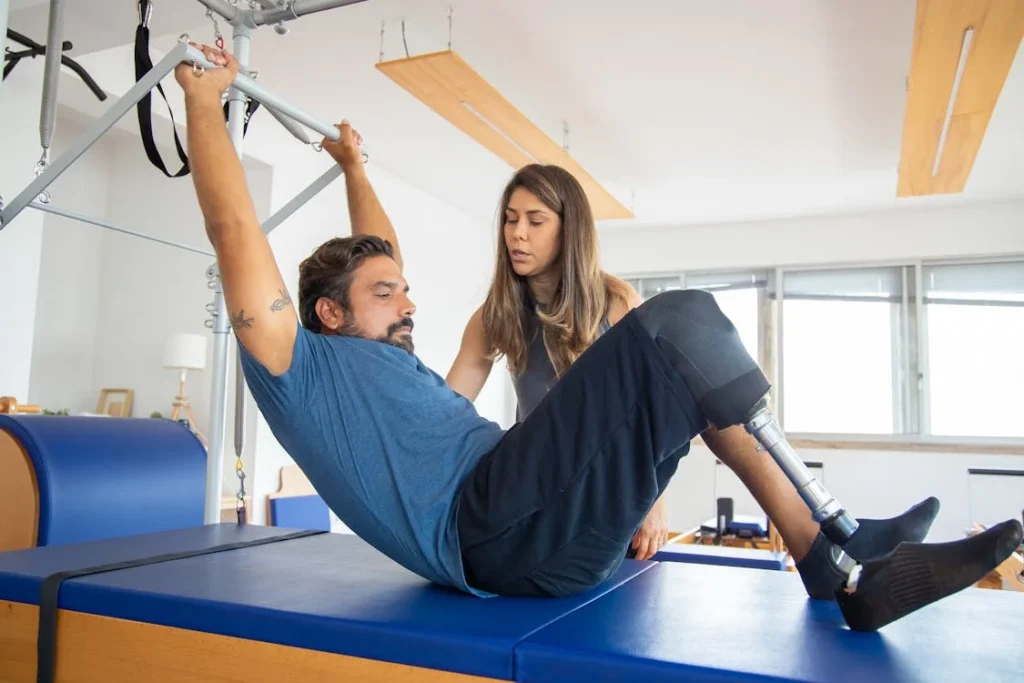
Conclusion
Compression therapy is more than a step—it’s a smart strategy that brings amputees closer to their goal of walking again. It controls swelling, improves skin quality, shapes the limb, and supports faster, safer prosthetic readiness. Whether you’re in a big hospital or a rural clinic, using compression consistently and correctly makes a world of difference. It shortens recovery time, reduces complications, and helps the mind and body adapt with confidence.
At Robobionics, we believe in empowering patients with simple, effective tools that lead to lasting mobility. Compression therapy is one of those tools. When applied with care and consistency, it becomes the bridge between healing and motion.
Let us help you build that bridge—one gentle step at a time.



